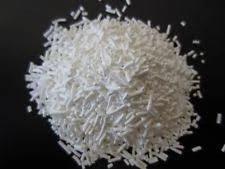
Understanding the Aspartame Production Process for Food Industry Applications
The Aspartame Production Process An Overview
Aspartame is one of the most widely used artificial sweeteners globally, offering a sugar-like sweetness without the calories. It is about 200 times sweeter than sucrose, making it a popular choice for various food and beverage products, especially for those seeking to reduce caloric intake. Understanding the production process of aspartame is essential for grasping its role in the food industry, as well as its safety and regulatory considerations.
Raw Materials and Initial Steps
The production of aspartame begins with its two primary amino acid components aspartic acid and phenylalanine. These amino acids can be sourced from natural proteins or produced synthetically through fermentation processes. Once obtained, these components are purified to ensure high quality.
The first step in the synthesis of aspartame is the coupling of aspartic acid and phenylalanine. This is typically achieved through a chemical reaction facilitated by specific catalysts under controlled conditions. The reaction is sensitive to temperature and pH; thus, closely monitored parameters are crucial for optimal yield and purity of the final product.
Enzymatic Conversion
After the initial reaction, the resulting dipeptide (known as aspartyl-phenylalanine) must be converted into aspartame. This is done through an enzymatic process, wherein the dipeptide is reacted with methanol. This key step not only introduces the methyl group necessary for the sweetness of aspartame but also helps in stabilizing the product. The enzymatic process is favored for its efficiency and ability to produce high-purity outcomes, minimizing the presence of unwanted byproducts.
Purification Process
aspartame process

The next phase involves purification, which is crucial for ensuring the safety and quality of the final product. The mixture resulting from the enzymatic reaction contains a variety of compounds, including unreacted materials and byproducts, which must be removed. This is typically accomplished through a series of techniques such as crystallization, ion exchange chromatography, and membrane filtration.
During crystallization, the desired compound (aspartame) is separated from other substances based on differences in solubility. The purification process not only helps in obtaining the required product but also enhances its shelf-life and stability, essential for commercial applications.
Quality Control and Safety Measures
Throughout the production process, rigorous quality control measures are implemented to ensure that aspartame meets health and safety standards. Companies conduct extensive testing to monitor various parameters, including purity levels, safety against harmful contaminants, and adherence to regulatory guidelines set by agencies such as the FDA and EFSA.
Moreover, specific labeling regulations require manufacturers to indicate the presence of aspartame on product packaging, especially considering that it contains phenylalanine, which can be harmful to individuals with phenylketonuria (PKU), a rare genetic disorder.
Conclusion
In conclusion, the production of aspartame involves a complex series of reactions that transform simple amino acids into a highly versatile sweetener. From sourcing raw materials to meticulous purification processes and rigorous quality control, every step is designed to ensure that aspartame is safe, stable, and ready for use in a wide range of food and beverages. As consumer preferences continue to shift towards healthier options, the importance of understanding the aspartame process becomes even more significant for both manufacturers and consumers alike. As this sweetener continues to play a pivotal role in modern diets, ongoing research and regulatory oversight will ensure its safety and efficacy in promoting healthier lifestyles.
-
The Safety Challenges of Ammonium Nitrate FertilizerNewsJun.26,2025
-
The Critical Role of Mining ChemicalsNewsJun.26,2025
-
Shelf Life of Glacial Acetic Acid Food GradeNewsJun.26,2025
-
Enhancing PVC Longevity with 1,2,3-Benzotriazole InnovationsNewsJun.26,2025
-
China’s Dominance in Food Additive ProductionNewsJun.26,2025
-
Can Aluminum Hydroxide Replace More Toxic Alternatives?NewsJun.26,2025
-
PE and PP Plastics with Benzotriazole AdditivesNewsJun.12,2025
Hebei Tenger Chemical Technology Co., Ltd. focuses on the chemical industry and is committed to the export service of chemical raw materials.
-

view more DiethanolisopropanolamineIn the ever-growing field of chemical solutions, diethanolisopropanolamine (DEIPA) stands out as a versatile and important compound. Due to its unique chemical structure and properties, DEIPA is of interest to various industries including construction, personal care, and agriculture. -

view more TriisopropanolamineTriisopropanolamine (TIPA) alkanol amine substance, is a kind of alcohol amine compound with amino and alcohol hydroxyl, and because of its molecules contains both amino and hydroxyl. -

view more Tetramethyl Thiuram DisulfideTetramethyl thiuram disulfide, also known as TMTD, is a white to light-yellow powder with a distinct sulfur-like odor. It is soluble in organic solvents such as benzene, acetone, and ethyl acetate, making it highly versatile for use in different formulations. TMTD is known for its excellent vulcanization acceleration properties, which makes it a key ingredient in the production of rubber products. Additionally, it acts as an effective fungicide and bactericide, making it valuable in agricultural applications. Its high purity and stability ensure consistent performance, making it a preferred choice for manufacturers across various industries.











